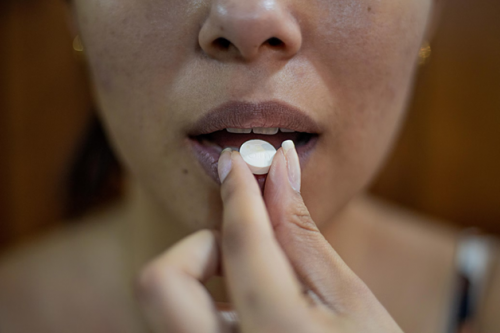
Spironolactone Shows Promise for Early, Mild HS in Women of Childbearing Age
June 30, 2025
Authors:
Sarah Schultz, Medical College of Georgia at Augusta University
Oluwakemi Onajin, MD, Section of Dermatology, Department of Medicine, University of Chicago
Why was this research done?
Hidradenitis Suppurativa (HS) is most common in women of childbearing age (WOCA), or patients who can become pregnant. Hormonal fluctuations and androgens are thought to contribute to HS. Androgens are a group of hormones that promote physical changes during puberty, muscle growth, bone strength, and skin and reproductive function. Although they are often called “male” hormones, they’re also present in females in lower levels. HS commonly appears after puberty and has been associated with other medical conditions with high androgen levels, such as polycystic ovary syndrome (PCOS). Androgens can cause excessive skin cell growth which contributes to the formation of painful nodules and tunnels seen in HS. Spironolactone is an androgen-blocking medication frequently used to treat HS in patients who can become pregnant. It is not typically used in males due to side effects. However, its actual effectiveness in WOCA—who naturally have higher androgen levels than girls before entering puberty or women after menopause—has not been well-studied. This study examined how WOCA with HS responded to spironolactone treatment.
How was this research done?
Researchers reviewed the medical records of 157 WOCA (ages 12-50) who had HS and were treated with spironolactone for at least 3 months. They collected information on patient demographics (including female sex, age, race, and ethnicity), symptom improvement, other treatments tried, disease severity (Hurley stage), and affected body areas.
What did this study find?
- Patient age, ethnicity, and race did not affect how patients responded to spironolactone.
- Only 20% of the patients with HS in the study had improvement in their symptoms while taking spironolactone.
- Patients with mild disease had a better response to spironolactone than patients with moderate or severe disease.
- Patients with severe disease were 85% less likely to show improvement when treated with spironolactone.
- Patients who began taking spironolactone soon after being diagnosed were more likely to see improvement.
- Patients who had been treated unsuccessfully in the past or had longer duration of their disease were less likely to improve with spironolactone.
What is the big picture?
Although spironolactone is a common HS treatment in women, it does not work for all patients. Patients with mild disease and those who start treatment early are more likely to benefit from spironolactone. Further research is needed to identify which patients with HS would most likely benefit from spironolactone treatment.
Paper Citation: Gangidi SV, Greene RK, Olsen E, Jackson S, et al. Efficacy of spironolactone in treating hidradenitis suppurativa in women of childbearing age: a single-center retrospective analysis. International Journal of Women’s Dermatology. 2024; 10(3): e159.
Image Credit: https://unsplash.com/photos/woman-putting-her-hand-on-her-lips-Y14ONzYtxb4

